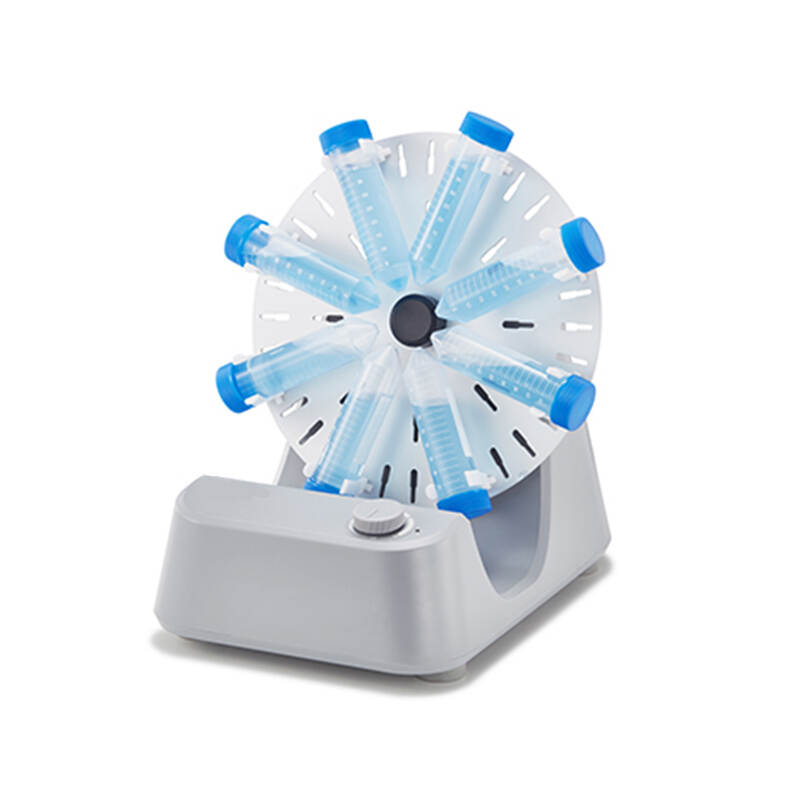Optimization of Test Tube Vortexing Parameters: Enhancing Efficiency and Accuracy
July 03,2023
Test tube vortexing is a widely used laboratory technique that involves the rapid mixing or agitation of liquid samples in test tubes. It is an essential step in various scientific disciplines, including molecular biology, biochemistry, and analytical chemistry. Optimizing the vortexing parameters can significantly improve the efficiency and accuracy of sample mixing, leading to more reliable experimental results. In this blog post, we will explore the key factors to consider when optimizing test tube vortexing parameters and discuss their impact on sample preparation.
I. Understanding Test Tube Vortexing
Definition and Purpose
Test tube vortexing refers to the process of using a vortex mixer to create a vortex or whirlpool-like motion in a liquid sample contained within a test tube. The purpose of vortexing is to ensure thorough mixing of the sample components, such as reagents, cells, or particles, for subsequent analysis or experimentation.
Basic Principles
During vortexing, the vortex mixer generates a circular motion in the liquid sample, causing the sample to move rapidly in a swirling pattern. This motion creates shear forces and turbulence, promoting the mixing of the sample components. The vortexing speed determines the intensity of the vortex and the degree of sample agitation.

II. Factors Affecting Test Tube Vortexing
Test Tube Size and Material
The size and material of the test tube can influence vortexing efficiency. Smaller test tubes may require higher vortexing speeds to achieve the desired mixing, while larger test tubes may require longer vortexing durations. Additionally, the material of the test tube can affect the transfer of energy from the vortex mixer to the sample, with materials like glass being more efficient than plastic.
Vortexer Speed and Duration
The vortexer speed plays a crucial role in sample mixing. Higher speeds generally result in more vigorous vortexing and better mixing. However, excessively high speeds can lead to sample splashing or aerosol formation, potentially causing sample loss or contamination. The duration of vortexing depends on the sample type and the desired level of mixing. It is important to avoid over-vortexing, as it can lead to sample degradation or denaturation.
Sample Viscosity and Volume
The viscosity of the sample affects vortexing efficiency. High-viscosity samples, such as viscous solutions or cell suspensions, may require longer vortexing durations or higher vortexing speeds to achieve adequate mixing. It is important to consider the viscosity of the sample when selecting vortexing parameters. Additionally, the volume of the sample can impact vortexing efficiency, with larger volumes requiring longer vortexing durations or higher vortexing speeds.
Sample Contamination and Cross-Contamination
During vortexing, there is a risk of sample contamination, especially when working with infectious or hazardous materials. It is crucial to use proper containment measures, such as sealing the test tubes or using appropriate caps, to prevent sample leakage or aerosol formation. Cross-contamination between samples can also occur if the vortex mixer is not cleaned properly between runs. Regular cleaning and disinfection of the vortex mixer and its accessories are essential to minimize the risk of cross-contamination.
III. Optimizing Test Tube Vortexing Parameters
Experimental Design
To optimize test tube vortexing parameters, it is important to design experiments carefully. Consider factors such as the sample type, volume, and viscosity, as well as the desired level of mixing. Use appropriate controls and replicates to ensure the reliability of the results.
Validation and Verification
After optimizing the vortexing parameters, it is crucial to validate and verify the results. Use positive and negative controls to ensure that the optimized parameters consistently yield the desired level of mixing. This validation step helps to ensure the accuracy and reproducibility of the experimental results.
Troubleshooting
During test tube vortexing, certain issues may arise, affecting the efficiency of sample mixing. Common issues include sample splashing, inadequate mixing, or sample loss. Troubleshooting tips include adjusting the vortexing speed or duration, using different test tube sizes or materials, or employing alternative mixing techniques if necessary.
IV. Applications and Benefits
Molecular Biology
Optimized vortexing parameters are crucial in DNA and RNA extraction, PCR, and other molecular biology techniques. Efficient mixing ensures uniform distribution of reagents, enzymes, and templates, leading to more reliable and reproducible results.
Biochemistry and Cell Culture
In protein extraction, cell lysis, and cell culture techniques, optimized vortexing parameters enhance the efficiency of sample homogenization and the release of intracellular components. This improves downstream analysis and increases the yield of target molecules.
Analytical Chemistry
Optimized vortexing parameters play a vital role in sample preparation for various analytical techniques, such as spectrophotometry and chromatography. Proper mixing ensures representative sampling and reduces variability, leading to more accurate and precise analytical measurements.
The Optimization of Test Tube Vortexing Parameters Improve the Efficiency and Accuracy
Optimizing test tube vortexing parameters is essential for efficient and accurate sample mixing in the laboratory. Factors such as test tube size and material, vortexer speed and duration, sample viscosity and volume, and sample contamination should be carefully considered. By optimizing these parameters, scientists can improve the reliability and reproducibility of their experimental results, leading to advancements in scientific knowledge and discoveries.